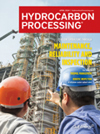Heat Transfer
HRSG water/steam sampling: Do it right or face potential consequences
Many large industrial facilities—including refineries, and chemical and petrochemical plants—are increasingly turning to co-generation for process steam and power production.
BASF and MAN Energy Solutions enter into partnership for construction of one of the world’s largest heat pumps in Ludwigshafen
This project is intended to make an important contribution to reducing greenhouse gas emissions, establishing the use of low-CO2 technologies in chemical production and reducing the site’s natural gas consumption.
Lummus Technology launches next generation of breech-lock high-pressure heat exchanger closure
Lummus Technology announced the launch of its Polaris breech-lock closure, a new technological upgrade applicable to its high-pressure heat exchanger equipment.
Uncommon lessons: Shell-and-tube heat exchangers—Part 2
Shell-and-tube heat exchangers (STHEs) are the most common heat transfer process equipment in all types of industrial plants.
Preferential baffle reboiler—Part 2
Distillation towers consume ~30% of the energy in a refinery or petrochemical facility. The reboiler is the stomach of the distillation tower that consumes the energy to separate the components.
Overview of decarbonization pathways for the oil and gas and petrochemical industries—Part 1
This two-part article will cover the seven pathways to decarbonizing the oil and gas and petrochemical industries.
Preferential baffle reboiler—Part 1
Distillation towers consume ~30% of the energy in a refinery or petrochemical facility.
Uncommon lessons: Shell-and-tube heat exchangers—Part 1
Shell-and-tube heat exchangers (STHEs) are the most common heat transfer process equipment in all types of industrial plants.
HP Flashback: Excerpts from the 1950s: Capacity expands after WW2 and technologies and maintenance mature
The following is a mixture of technical articles, columns and headlines published in the 1950s by <i>Petroleum Refiner,</i> the forerunner to <i>Hydrocarbon Processing</i>.
Modularization of air-cooled heat exchangers: A “plug and play” solution
An air-cooled heat exchanger—also called an air fin cooler—is used to reject the heat from a fluid (liquid or gas, or a mixture of liquid and gas) directly to the ambient air.

- India receives fuel oil cargo in Russian SCF tanker after brief halt 4/26
- Biden administration (U.S.) to release SAF tax credit model 4/26
- Boeing, Wagner advance Australia’s SAF Industry 4/26
- S-Oil expects Q2 refining margins to remain steady then trend upward 4/26
- Vitol to charter supertankers from U.S. to Nigeria's Dangote refinery 4/26
- Refiner Valero beats profit estimates on resilient demand, tight supplies 4/26




